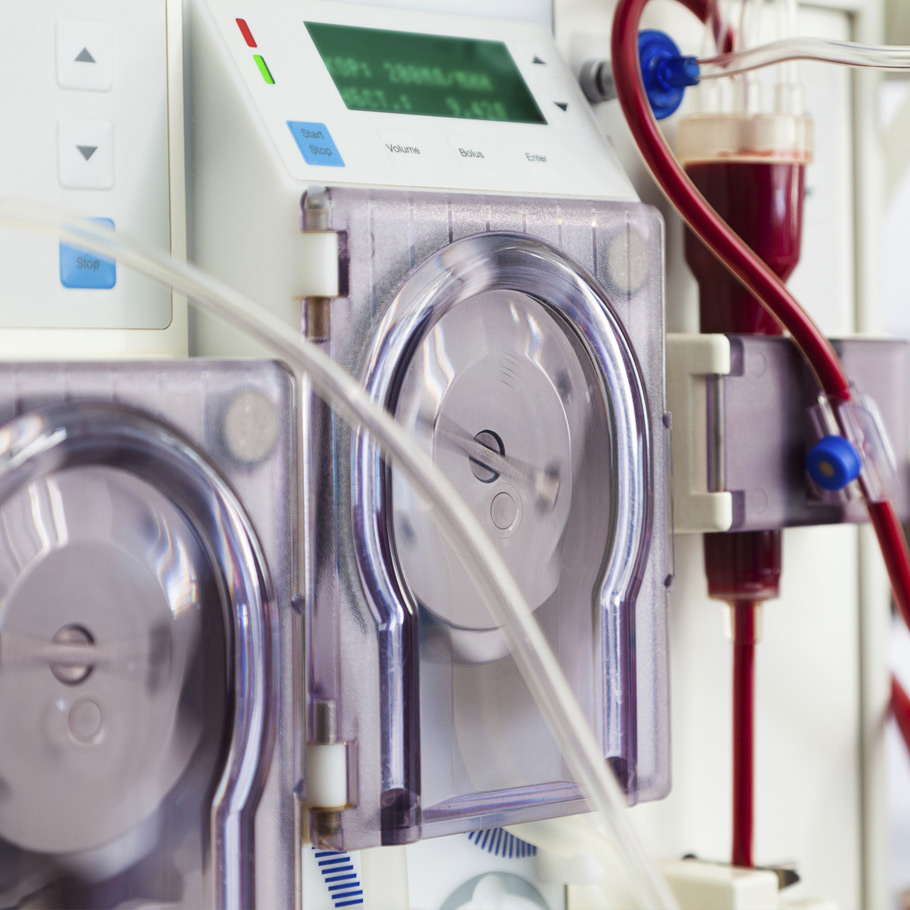Title Page
-
Conducted on
-
Prepared by
-
Location
- Alameda Hospital
- Fairmont Hospital
- Highland Hospital
- John George Psychiatric Hospital
- San Leandro Hospital
-
Unit
Goal 1 - Improve accuracy of patient identification
Improve accuracy of patient identification
-
Patients are identified using two identifiers.
-
Label containers used for blood and other specimens in the presence of the patients.
-
There is distinct identification of newborns.
Eliminate transfusion errors related to patient misidentification
-
Before administration of blood or blood components the blood and blood components are matched to the order.
-
Before administration of blood or blood components the blood and blood components are matched to the patient.
-
Before administration or blood or blood components use a two person verification process or one person verification with automatic identification technology such as barcoding.
-
When using two person verification one person is the qualified transfusionist who is administering the blood or blood component.
-
When using two person verification, the second person is qualified to participate as determined by the hospital.
-
Goal 2 - Improve the effectiveness of communication among caregivers
-
There are written procedures for managing critical tests and diagnostic procedures that define critical tests and procedures.
-
There are written procedures for managing critical tests and diagnostic procedures that defined by whom and to whom results are reported.
-
There are written procedures that define the acceptable length of time between the availability and reporting of critical tests and procedures.
-
The procedures for managing critical tests and diagnostic procedures are implemented.
-
The timeliness of reporting the results of critical tests and procedures is evaluated.
Goal 3 - Improve the safety of using medications
-
In perioperative and procedural settings both on and off the sterile field, label medications and solutions not immediately administered. This applies even if only one medication is used.
-
In perioperative and procedural settings both on and off the sterile field, labeling occurs when any medication or solution is transferred from the original packaging to another container.
-
In perioperative and other procedural settings both on and off the sterile field, medication or solution labels include the following: medication or solution name; strength; amount of medication or solution containing medication ( if not a parent from the container); diluent name and volume (if not a parent from the container); expiration date we’re not used within 24 hours; expiration time when expiration occurs in less than 24 hours.
-
Verfy all medication or solution labels both verbally and visually. Verification is done by two individuals qualified to participate in the procedure whenever the person preparing the medication or solution is not the person who will be administering it.
-
Label each medication or solution as soon as it is prepared, unless it is immediately administered.
-
Immediately discard any medication and solution found unlabeled.
-
Remove all labeled containers on the sterile field and discard their contents at the conclusion of the procedure.
-
All medications and solutions both on and off the sterile field and their labels are reviewed by entering and exiting staff responsible for the management of medications.
Goal 3 - Reduce the likelihood of patient harm associated with the use of anti coagulation therapy
-
The hospital uses approved protocols and evidence-based procedural guidelines for the initiation and maintenance of the anticoagulant therapy that address medication selection; dosing; including adjustments for age and renal or liver function; drug Dash drug and food Dash drug interactions; and other risk factors as applicable.
-
The hospital uses approved protocols and evidence-based practice guidelines for reversal of anticoagulation and management of bleeding events related to each anticoagulation medication.
-
The hospital uses approve protocols and evidence-based practice guidelines for perioperative management of all patients on anticoagulants.
-
The hospital has a written policy addressing the need for baseline and ongoing laboratory tests to monitor and adjust anticoagulation therapy.
-
The hospital addresses anticoagulation and safety practices through the following: establishing a process to identify, respond to, and report adverse drug events, including adverse event outcomes; evaluating anticoagulation safe practices, taking actions to improve safety practices, and measuring the effectiveness of those actions in a timeframe determined by the hospital.
-
The hospital provides education to patients and families specific to the anticoagulation medication prescribed, including the following: adherence to medication dose and scheduling; importance of follow-up appointments and lab testing (if applicable); potential drug/drug and drug/food interactions; and, the potential for adverse drug reactions.
-
The hospital uses only oral unit-dose products, prefilled syringe is, or premixed infusion bags when these types of products are available.
-
When heparin is administered intravenously and continuously, the hospital uses programmable pumps in order to provide consistent and accurate dosing.
Goal 3 - Reconciling medications
-
Obtain information on the medications the patient is currently taking when he or she is admitted to the hospital or seen in an outpatient setting. This information is documented in a list or other format that is useful to those who manage medications.
-
Define the types of medication information to be collected in non-– 24 hour settings and different patient circumstances.
-
Compare the medication information the patient brought to the hospital with the medications ordered for the patient by the hospital in order to identify and resolve discrepancies.
-
Provide the patient (or family as needed) with written information on the medications the patient should be taking when he or she is discharged from the hospital or at the end of an outpatient encounter (for example name, dose, route, frequency, purpose).
-
Explain the importance of managing medication information to the patient when he or she is discharged from the hospital or at the end of an outpatient encounter.
Goal 6 - Reduce the risk of harm associated with clinical alarm systems
-
Leaders establish alarm system safety as a hospital priority.
-
Identify the most important alarm signals to manage based on the following:<br>- Input from the medical staff and clinical departments<br>- Risk to patients if the alarm signal is not attended to or if it malfunctions<br>- Whether specific alarm signals are needed or unnecessarily contribute to alarm noise and alarm fatigue<br>- Potential for patient harm based on internal incident history<br>- Published best practices and guidelines
-
Establish policies and procedures for managing the alarms identified in EP 2 above that, at a minimum, address the following:<br>- Clinically appropriate settings for alarm signals<br>- When alarm signals can be disabled<br>- When alarm parameters can be changed<br>- Who in the organization has the authority to set alarm parameters<br>- Who in the organization has the authority to change alarm parameters<br>- Who in the organization has the authority to set alarm parameters to “off”<br>- Monitoring and responding to alarm signals<br>- Checking individual alarm signals for accurate settings, proper operation, and detectability
-
Educate staff and licensed independent practitioners about the purpose and proper operation of alarm systems for which they are responsible.
Goal 7 - Reduce the risk of healthcare-acquired infections
-
Implement a program that follows categories IA, IB, and IC of either the current Centers for Disease Control and Prevention (CDC) or the current World Health Organization (WHO) hand hygiene guidelines. (See also IC.01.04.01, EP 1)
-
Set goals for improving compliance with hand hygiene guidelines. (See also IC.03.01.01, EP 1)
-
Improve compliance with hand hygiene guidelines based on established goals.
Goal 7 - Reduce health care–associated infections due to multidrug-resistant organisms in acute care hospitals.
-
Conduct periodic risk assessments (in time frames defined by the hospital) for multidrug-resistant organism acquisition and transmission. (See also IC.01.03.01, EPs 1–3)
-
Educate staff and licensed independent practitioners about multidrug-resistant organisms and prevention strategies. Education occurs upon hire or granting of initial privileges and periodically thereafter as determined by the organization.
-
Educate patients, and their families as needed, who are infected or colonized with a multidrug-resistant organism about health care–associated infection prevention strategies.
-
Implement a surveillance program for multidrug-resistant organisms based on the risk assessment.
-
Measure and monitor multidrug-resistant organism prevention processes and outcomes, including the following:<br>- Multidrug-resistant organism infection rates using evidence-based metrics<br>- Compliance with evidence-based guidelines or best practices<br>- Evaluation of the education program provided to staff and licensed independent practitioners<br>(See also MM.09.01.01, EP 5)
-
Provide multidrug-resistant organism process and outcome data to key stakeholders, including leaders, licensed independent practitioners, nursing staff, and other clinicians.
-
Implement policies and practices aimed at reducing the risk of transmitting multidrug-resistant organisms. These policies and practices meet regulatory requirements and are aligned with evidence-based standards (for example, the Centers for Disease Control and Prevention [CDC] and/or professional organization guidelines).
-
When indicated by the risk assessment, implement a laboratory-based alert system that identifies new patients with multidrug-resistant organisms.
Implement evidence based practices to prevent CLABSI
-
Educate staff and licensed independent practitioners who are involved in managing central lines about central line–associated bloodstream infections and the importance of prevention. Education occurs upon hire or granting of initial privileges and periodically thereafter as determined by the organization.
-
Prior to insertion of a central venous catheter, educate patients and, as needed, their families about central line–associated bloodstream infection prevention.
-
Implement policies and practices aimed at reducing the risk of central line–associated bloodstream infections. These policies and practices meet regulatory requirements and are aligned with evidence-based standards (for example, the Centers for Disease Control and Prevention [CDC] and/or professional organization guidelines).
-
Conduct periodic risk assessments for central line–associated bloodstream infections, monitor compliance with evidence-based practices, and evaluate the effectiveness of prevention efforts. The risk assessments are conducted in time frames defined by the hospital, and this infection surveillance activity is hospitalwide, not targeted.
-
Provide central line–associated bloodstream infection rate data and prevention outcome measures to key stakeholders, including leaders, licensed independent practitioners, nursing staff, and other clinicians.
-
Use a catheter checklist and a standardized protocol for central venous catheter insertion.
-
Use a standardized supply cart or kit that contains all necessary components for the insertion of central venous catheters.
-
Perform hand hygiene prior to catheter insertion or manipulation.
-
Use maximum sterile barrier precautions during central venous catheter insertion.
-
For adult patients, do not insert catheters into the femoral vein unless other sites are unavailable.
-
Use an alcoholic chlorhexidine antiseptic for skin preparation during central venous catheter insertion unless contraindicated.
-
Use a standardized protocol to disinfect catheter hubs and injection ports before accessing the ports.
-
Evaluate all central venous catheters routinely and remove nonessential catheters.
Implement evidence-based practices for preventing surgical site infections.
-
Educate staff and licensed independent practitioners involved in surgical procedures about surgical site infections and the importance of prevention. Education occurs upon hire, annually thereafter, and when involvement in surgical procedures is added to an individual’s job responsibilities.
-
Educate patients, and their families as needed, who are undergoing a surgical procedure about surgical site infection prevention.
-
Implement policies and practices aimed at reducing the risk of surgical site infections. These policies and practices meet regulatory requirements and are aligned with evidence-based guidelines (for example, the Centers for Disease Control and Prevention [CDC] and/or professional organization guidelines).
-
As part of the effort to reduce surgical site infections:<br>- Conduct periodic risk assessments for surgical site infections in a time frame determined by the hospital.<br>- Select surgical site infection measures using best practices or evidence-based guidelines.<br>- Monitor compliance with best practices or evidence-based guidelines.<br>- Evaluate the effectiveness of prevention efforts.
-
Measure surgical site infection rates for the first 30 or 90 days following surgical procedures based on National Healthcare Safety Network (NHSN) procedural codes. The hospital’s measurement strategies follow evidence-based guidelines.
-
Provide process and outcome (for example, surgical site infection rate) measure results to key stakeholders.
-
Administer antimicrobial agents for prophylaxis for a particular procedure or disease according to methods cited in scientific literature or endorsed by professional organizations. *
-
When hair removal is necessary, use a method that is cited in scientific literature or endorsed by professional organizations. *
-
When indicated by the risk assessment, implement an alert system that identifies readmitted or transferred patients who are known to be positive for multidrug-resistant organisms.
Implement evidence-based practices to prevent indwelling catheter-associated urinary tract infections (CAUTI).
-
Educate staff and licensed independent practitioners involved in the use of indwelling urinary catheters about CAUTI and the importance of infection prevention. Education occurs upon hire or granting of initial privileges and when involvement in indwelling catheter care is added to an individual’s job responsibilities. Ongoing education and competence assessment occur at intervals established by the organization.
-
Educate patients who will have an indwelling catheter, and their families as needed, on CAUTI prevention and the symptoms of a urinary tract infection.
-
Develop written criteria, using established evidence-based guidelines, for placement of an indwelling urinary catheter. Written criteria are revised as scientific evidence changes.
-
Follow written procedures based on established evidence-based guidelines for inserting and maintaining an indwelling urinary catheter. The procedures address the following: Limiting use and duration; performing hand hygiene prior to catheter insertion or maintenance care; using aseptic techniques for site preparation, equipment and supplies; securing catheters for unobstructed urine flow and drainage; maintaining the sterility of the urine collection system; replacing the urine collection system when required; collecting urine samples.
-
Measure and monitor catheter-associated urinary tract infection prevention processes and outcomes in high-volume areas by doing the following: Selecting measures using evidence based guidelines or best practices; Having a consistent method for medical record documentation of indwelling catheter use, insertion and maintenance; monitoring compliance with evidence based guidelines or best practices; and evaluating the effectiveness of prevention efforts.
-
Goal 15 Identify safety risks inherent in its population
-
For psychiatric hospitals and psychiatric units in general hospitals: The hospital conducts an environmental risk assessment that identifies features in the physical environment that could be used to attempt suicide; the hospital takes necessary action to minimize the risk(s) (for example, removal of anchor points, door hinges, and hooks that can be used for hanging).
-
For nonpsychiatric units in general hospitals: The organization implements procedures to mitigate the risk of suicide for patients at high risk for suicide, such as one-to-one monitoring, removing objects that pose a risk for self-harm if they can be removed without adversely affecting the patient’s medical care, assessing objects brought into a room by visitors, and using safe transportation procedures when moving patients to other parts of the hospital.
-
Use an evidence-based process to conduct a suicide assessment of patients who have screened positive for suicidal ideation. The assessment directly asks about suicidal ideation, plan, intent, suicidal or self-harm behaviors, risk factors, and protective factors.
-
Document patients’ overall level of risk for suicide and the plan to mitigate the risk for suicide.
-
Follow written policies and procedures addressing the care of patients identified as at risk for suicide. At a minimum, these should include the following: Training and competence assessment of staff who care for patients at risk for suicide; Guidelines for reassessment; and, monitoring patients who are at high risk for suicide.
-
Follow written policies and procedures for counseling and follow-up care at discharge for patients identified as at risk for suicide.
Goal Universal Protocol
Conduct a preprocedure verification process
-
Implement a preprocedure process to verify the correct procedure, for the correct patient, at the correct site.
-
Identify the items that must be available for the procedure and use a standardized list to verify their availability. At a minimum, these items include the following: Relevant documentation (H&P, signed consent, nursing assessment, and preanesthesia assessment); Labeled diagnostic and radiology test results; Any required blood products, implants, devices, and/or special equipment for the procedure.
-
Match the items that are to be available in the procedure area to the patient.
Mark the procedure site
-
Identify those procedures that require marking of the incision or insertion site. At a minimum, sites are marked when there is more than one possible location for the procedure and when performing the procedure in a different location would negatively affect quality or safety.
-
Mark the procedure site before the procedure is performed and, if possible, with the patient involved.
-
The procedure site is marked by a licensed independent practitioner who is ultimately accountable for the procedure and will be present when the procedure is performed. In limited circumstances, the licensed independent practitioner may delegate site marking to an individual who is permitted by the organization to participate in the procedure and has the following qualifications: An individual in a medical postgraduate education program who is being supervised by the licensed independent practitioner performing the procedure; who is familiar with the patient; and who will be present when the procedure is performed; A licensed individual who performs duties requiring a collaborative agreement or supervisory agreement with the licensed independent practitioner performing the procedure (that is, an advanced practice registered nurse [APRN] or physician assistant [PA]); who is familiar with the patient; and who will be present when the procedure is performed.
-
The method of marking the site and the type of mark is unambiguous and is used consistently throughout the hospital.
-
A written, alternative process is in place for patients who refuse site marking or when it is technically or anatomically impossible or impractical to mark the site (for example, mucosal surfaces or perineum).
A time-out is performed before the procedure
-
Conduct a time-out immediately before starting the invasive procedure or making the incision.
-
The time-out has the following characteristics: It is standardized as defined by the hospital; it is initiated by a designated member of the team; It involves the immediate members of the procedure team, including the individual performing the procedure, the anesthesia providers, the circulating nurse, the operating room technician, and other active participants who will be participating in the procedure from the beginning.
-
When two or more procedures are being performed on the same patient, and the person performing the procedure changes, perform a time-out before each procedure is initiated.
-
During the time-out, the team members agree, at a minimum, on the following: Correct patient identity; the correct site; the procedure to be done.
-
Document the completion of the time-out.
Other Risk & Patient Safety Rounds
-
Staff can explain how to report a patient safety or risk incident.
-
Staff can locate organization wide, hospital specific and department specific policies.
-
The crash cart log is current.
-
The defibrillator is plugged into the red plug outlet.
-
The medication refrigerator temperature log is maintained.
-
The medication freezer temperature log is maintained.
-
The staff is aware of and locate patients' advance directives.
-
Cardiac alarms are on at all times (monitored patients).
-
Cardiac alarms are responded to when activated.
-
Patients are assessed for fall risk.
-
Patients at risk for falls have interventions implemented per policy (arm bands, bracelets, signs, blankets, socks, bed alarms, chair alarms, etc.)
-
Patients at risk for falls have a care plan for falls documented in the EHR.
Safety and Security
-
The area is clear of slip/trip hazards.
-
Doors are not propped open.
-
Fire and smoke doors positively latch.
-
Fire alarm pull stations are not blocked.
-
Fire exinguishers are not blocked.
-
Fire extinguishers have been checked monthly.
-
Staff can describe what their role is in case of fire. (RACE & PASS)
-
The nursing station is clear of all food and drink.
-
Storage areas maintain an 18 inch clearance from all sprinklers.
-
Areas identified as high risk security areas are locked/secured (medication rooms, mother-baby units, pharmacy, etc.)
-
Staff and visitors are clearly identified (name badges, visitor badges, etc.)
-
Staff demonstrate proper body mechanics.















